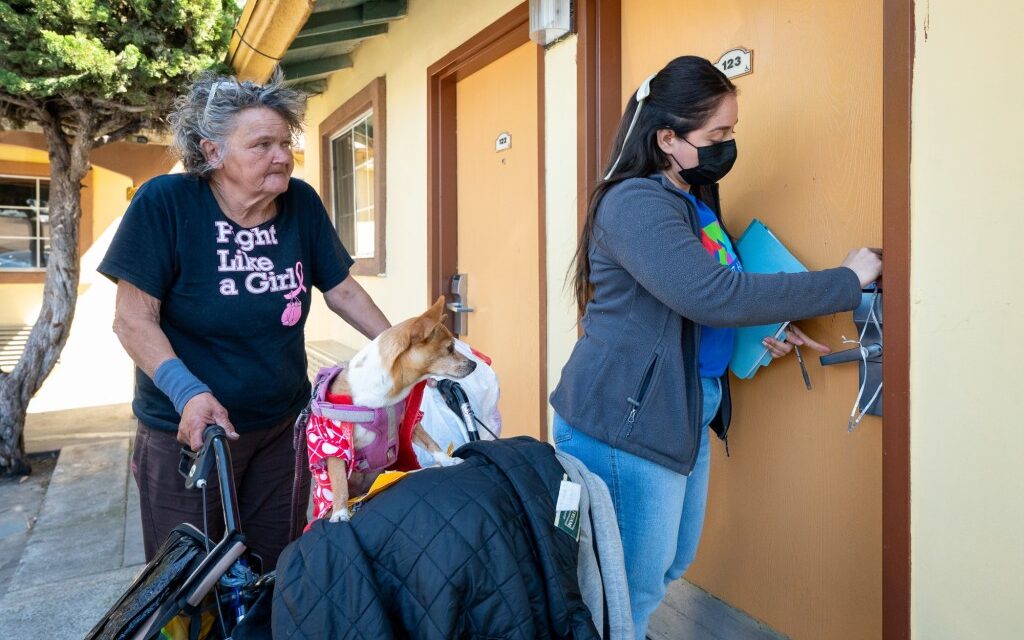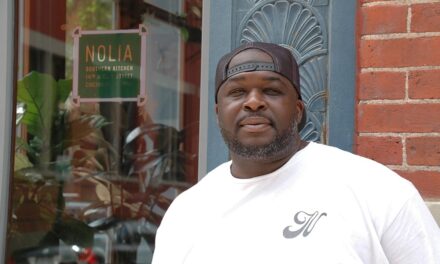
A new USC study found Los Angeles County residents see homelessness as a serious problem, listing mental illness, addiction, the high cost of housing and financial pressures as the four top factors.
Proponents of Measure A on the Nov. 5 ballot — a one-half percent (0.50%) sales tax in L.A. County for homeless services that doubles the current tax — see the USC data as an indication of voter support. But that remains to be seen.
A poll conducted between Sept. 25 and Oct. 1 by the UC Berkeley Institute of Governmental Studies and co-sponsored by the Los Angeles Times found nearly 50% supporting the measure. The poll had a 3% margin of error.
The Measure A campaign says their blitz of ads on YouTube and TV screens, as well as phone banking — mostly happening after the UC Berkeley poll was taken — moves the needle toward passage. The measure needs a majority to pass.
“All polls show that voters support Measure A, and more move our way when they hear that it will stop a 25 percent increase in homelessness and move people from tents into mental health treatment,” said Sarah Dusseault, treasurer and adviser to the Measure A campaign, in an emailed response on Friday, Oct. 25.
The campaign has reached 6 million people on YouTube and produced 46 million ad impressions. Dusseault said the campaign has persuaded 200,000 potential voters to support Measure A.
“We think we are doing really well,” she added. The campaign did not offer any specific polling information, other than to say the UC Berkeley poll was done prior to their campaign blitz.
If Measure A passes the cost for middle-class families is estimated at $5 per month, and $2 per month for low-income families, according to the Measure A campaign.
What would it do?
Measure A would institute the one-half percent sales tax and make it permanent. It would also repeal Measure H, the one-quarter percent (0.25%) sales tax in the county that currently funds programs to reduce and prevent homelessness. Measure H was passed by 69.3% of county voters in 2017 and it expires in 2027.
Measure A would raise about $1.1 billion in the first year, according to a fiscal analysis by Oscar Valdez, the county auditor-controller.
Money raised would breakdown as follows:
• 61.25% to L.A. County for homeless services
• 35.75% to the L.A. County Affordable Housing Solutions Agency (LACAHSA) for affordable housing and prevention
• 3% to the L.A. County Development Authority for Local Housing Production
Arguments: pro, con
The Yes On A campaign emphasizes what would happen after Measure H expires and there’s no funding to replace it.
New data released by the county Chief Executive Office says more than 57,400 people in shelters or permanent housing could end up back on the streets, should Measure A fail. The funding cut would result in a 28% rise in unsheltered homeless countywide, the CEO’s office said.
Of the eight regions examined by the county CEO, the San Fernando Valley would see the third-highest impact, with an estimated 8,093 people returning to the streets. Central Los Angeles was the highest, followed by South Los Angeles as second-highest.
 This San Fernando Valley RV encampment was dismantled on Wednesday, Dec. 6, 2023, as part of LA’s Inside Safe effort to move homeless off streets and indoors. This encampment was on Forest Lawn Drive in Los Angeles. (Photo by Dean Musgrove, Los Angeles Daily News/SCNG)
This San Fernando Valley RV encampment was dismantled on Wednesday, Dec. 6, 2023, as part of LA’s Inside Safe effort to move homeless off streets and indoors. This encampment was on Forest Lawn Drive in Los Angeles. (Photo by Dean Musgrove, Los Angeles Daily News/SCNG)
The permanent funding would allow the county, its 200 nonprofit partners that provide services, and cities, to continue providing interim and permanent housing and increase mental health and drug addiction services. The measure would also put money into building affordable housing and providing subsidies to those who are in danger of becoming homeless, according to the campaign.
“Measure A guarantees continuity of critical services such as mental health care and addiction treatment, and helps us reach our most vulnerable neighbors,” said Stephanie Klasky-Gamer, president and CEO of L.A. Family Housing. The group is based in the San Fernando Valley.
 A man passes out in a Los Angeles alley near MacArthur Park after using fentanyl as others watch to make sure he was not overdosing. (Photo by Sarah Reingewirtz, Los Angeles Daily News/SCNG)
A man passes out in a Los Angeles alley near MacArthur Park after using fentanyl as others watch to make sure he was not overdosing. (Photo by Sarah Reingewirtz, Los Angeles Daily News/SCNG)
Measure A is supported by Los Angeles Mayor Karen Bass and Los Angeles County Sheriff Robert Luna. It also has endorsements from 150 or more organizations including Los Angeles Business Council, Central City Association, the Hospital Association of Southern California and the Greater L.A. African American Chamber of Commerce.
Opposition comes from the Howard Jarvis Taxpayers Association and other opponents who argue that county residents cannot afford the quarter-percent tax raise and that sales taxes are already above 10% in many areas.
Opponents also say Measure H has not worked and they disagree with pouring more dollars into a haphazard system.
“To date, we have not seen any detailed plan on how to address the homeless situation that plagues our city and county,” said Jack Humphreville, a columnist and a ratepayer advocate for the Greater Wilshire Neighborhood Council whose name appears on the ballot argument urging a “no” vote.
The county recorded 75,312 homeless people from the January 2024 homeless count. This is almost the same as the 75,518 people recorded in 2023 and welcome news after homelessness jumped 9.1% between the 2022 and 2023 homeless counts. The number of people living in shelters rose by 12.7%.
The county CEO report says the county has been working with cities and other agencies since Measure H passed in 2017. The county CEO report says:
• Overall, the county and its partners have placed 119,433 people into permanent housing. Of those, 44,129 were housed with Measure H funds.• About 157,141 were placed into interim housing; of those 82,966 with Measure H funds.• About 37,920 people were prevented from falling into homelessness, including 10,651 who were kept in their housing with Measure H funds.
More flexible, accountable
The new measure is more focused, flexible and accountable, said Dusseault. The measure sets goals for sheltering the unhoused and for mental health care access. It allows the county to alter funding formulas to accommodate a program that’s performing but needs extra funds, she said.
A new area supports rental assistance programs that help people stay in their homes. County statistics say for every 100 people getting housing, 125 more fall into homelessness, exacerbating the problem.
One example is Brilliant Corners, a nonprofit housing provider that executes master leases of apartment buildings at well-below market rates, Dusseault said.
Potential voters contacted by the campaign have said they want to see more accountability this time. Dusseault said Measure A dollars will be audited annually and will be overseen by a centralized commission.
“They like this measure because it has a combination of strategies,” Dusseault said. “This measure puts in funding for homeless services and for prevention, as well as for the creation and preservation of affordable housing.”
Many of those contacted by the campaign said they were concerned about homeless individuals clogging hospital emergency rooms.
The opposition argument on the ballot references the fact that Measure H sunsets, while this measure does not. The “no” argument signers object to a permanent tax for reducing homelessness.
“We haven’t heard that from voters,” Dusseault said. “Voters said show me where you’ve added accountability and how you can change according to outcomes.”
Originally Published: October 25, 2024 at 5:36 PM PST



